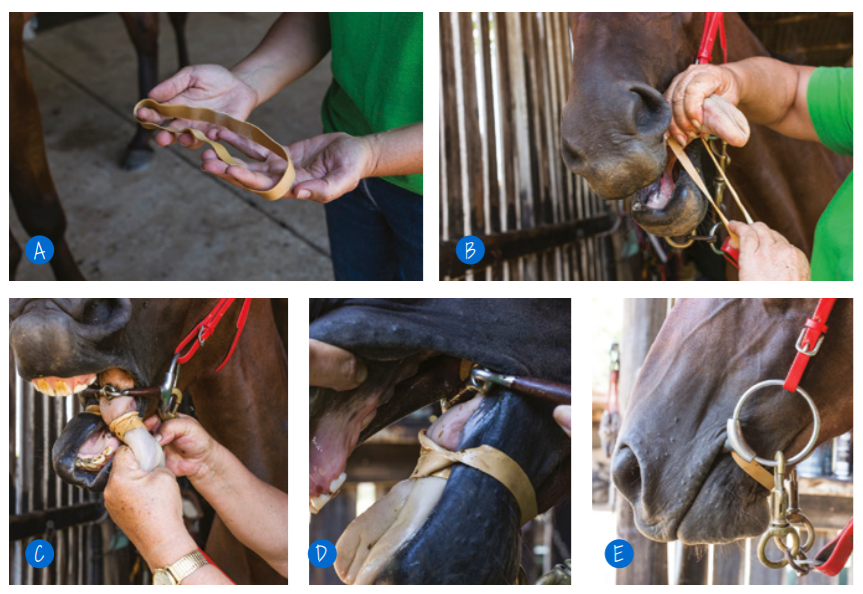Painful Equipment
Whips
Whips are used during racing to keep horses running at their maximum speed and to push a horse to continue at pace when they are tiring. This is supported by a study that found in races of 1200m and 1250m whip use was most frequent in the final 200 meters when horses begin to tire51. Being repeatedly struck by whips is painful and frightening for horses, and if done to other animals outside the context of racing would be considered cruelty.

Horse being whipped whilst racing. Source: RSPCA
The definition of cruelty to an animal is outlined in the Prevention of Cruelty to Animals Act (POCTAA) as;
"(1) A person who -
- wounds, mutilates, tortures, overrides, overdrives, overworks, abuses, beats, worries, torments or terrifies an animal; commits an act of cruelty.”
The study: https://journals.plos.org/plosone/article?id=10.1371/journal.pone.0033398
In 2009 regulations were implemented requiring whips to be padded when previously they had simply been a strip of leather. This change in regulation was supposedly aimed at reducing horse pain when whipped. However, studies have shown that the new regulations have done little to reduce the pain or suffering of horses when being struck. These studies also found that the ‘inappropriate’ use of whips in horse racing was commonplace, showcasing stewards’ inability to enforce regulations surrounding whipping, and more broadly the industry’s inability to comply with their own rules of racing.52
The main findings of one such study were:
- A visual indentation was made on horses in 83% of impacts
- In 64% of impacts the unpadded part of the whip made contact with horses
- There were 28 examples were whip rules were clearly in breach
- In more than 75% of impacts the whip was found to be hitting horses in the abdomen (or flank)
Further, another study found that whipping horses does not increase their chance of placing in a race and in fact 98% of horses were being whipped whilst it had no influence over their performance in the race whatsoever53.
Outlined within the Australian rules of Racing, jockeys are permitted to use their whip to their own discretion in the last 100 meters of a race.
![]() Whipping rules. Source: Australian Rules of Racing
Whipping rules. Source: Australian Rules of Racing
Tongue ties
A tongue tie is a strap that is first tied around a horse’s tongue and then around their lower jaw to immobilise their tongue during racing54. Tongue ties are fashioned using leather, nylon stockings and elastic bands55. The rules of racing permit the use of tongue ties and they are widely used throughout thoroughbred and standardbred racing56.
The aim of tongue ties is to improve the racing performance of horses by:
- Preventing horses from getting their tongue on top of the bit whilst racing as horses are more responsive to the bit when their tongue is beneath it.
- Preventing the obstruction of horses’ airways, which limits oxygenation and therefore reduces athletic abilities.
Horses often attempt to get their tongue above the bit during racing to relieve themselves from extreme pain in their mouth when jockeys won’t release the reins during racing57.

A horse having their tongue tied. Source: Horse and People Magazine
Tongue ties are understood to be fitted on horses prior to leaving the stables to race, and said to be left on horses for up to 30 minutes during training and 20 minutes during racing58.
72% of trainers have been found to use tongue ties on their horses, and over 30% of horses have been fitted with a tongue tie in at least one race59. 84% of horses that have had a tongue tie applied once will have them fitted ongoing60.
Impact on horses:
- Horses show signs of stress, pain and anxiety
- Difficulty swallowing
- Injuries such as cuts to the tongue
- Restricted blood flow to the tongue, which can cause permanent tissue damage
A recent study found that horses fitted with tongue ties displayed significantly more signs of anxiety and stress than horses without their tongues tied. This association increased with previous use, suggesting horses to not adjust to having their tongues tied61.


